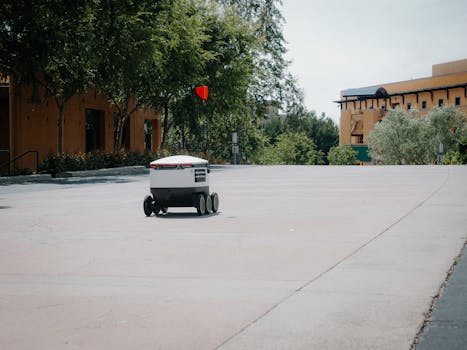
Smart Cities: Urban Trends for 2025
Smart Cities are revolutionizing the way we live, work, and interact with our surroundings. With the integration of technology, sustainability, and innovation, these cities are becoming the epitome of modern urban planning. In this article, we will explore the latest trends and advancements in Smart Cities, and what we can expect to see in 2025.
Introduction to Smart Cities
Smart Cities are designed to provide a high quality of life for their citizens, while minimizing their environmental footprint. They achieve this through the use of advanced technologies, such as the Internet of Things (IoT), data analytics, and artificial intelligence (AI). These technologies enable cities to become more efficient, sustainable, and responsive to the needs of their inhabitants.
Key Features of Smart Cities
Some of the key features of Smart Cities include:
- Sustainable Energy Systems: Smart Cities are adopting renewable energy sources, such as solar and wind power, to reduce their reliance on fossil fuels and minimize their carbon footprint.
- Energy-Efficient Buildings: Buildings in Smart Cities are designed to be energy-efficient, with features such as green roofs, rainwater harvesting, and advanced insulation.
- Intelligent Transportation Systems: Smart Cities are investing in intelligent transportation systems, including smart traffic management, public transit systems, and bike-sharing programs.
- Smart Grids: Smart Cities are implementing smart grids, which enable real-time monitoring and management of energy distribution, reducing energy waste and improving efficiency.
- Waste Management Systems: Smart Cities are adopting advanced waste management systems, including recycling programs, composting, and waste-to-energy conversion.
Urban Trends for 2025
As we look ahead to 2025, we can expect to see the following urban trends emerge in Smart Cities:
- Increased Adoption of Electric Vehicles: Electric vehicles will become increasingly popular, reducing air pollution and greenhouse gas emissions in urban areas.
- Expansion of Smart Home Technologies: Smart home technologies, such as voice assistants and smart thermostats, will become more widespread, making homes more energy-efficient and convenient.
- Growth of Urban Agriculture: Urban agriculture will continue to grow, with more cities adopting vertical farming, rooftop gardens, and community gardens to increase food production and reduce transportation emissions.
- Development of Hyper-Local Delivery Services: Hyper-local delivery services, which use electric or self-driving vehicles, will become more common, reducing traffic congestion and emissions.
- Increased Focus on Public Health and Wellness: Smart Cities will prioritize public health and wellness, with initiatives such as air quality monitoring, noise reduction, and urban fitness programs.
Challenges and Opportunities
While Smart Cities offer many benefits, they also present challenges and opportunities for growth. Some of the challenges include:
- Infrastructure Investment: Smart Cities require significant investment in infrastructure, including transportation systems, energy grids, and public buildings.
- Cybersecurity: Smart Cities are vulnerable to cybersecurity threats, which can compromise public safety and confidentiality.
- Digital Divide: Smart Cities can exacerbate the digital divide, where some citizens may not have access to the technology and skills needed to participate in the digital economy.
However, these challenges also present opportunities for innovation and growth. For example, the development of new technologies and business models can create jobs and stimulate economic growth.
Conclusion
Smart Cities are revolutionizing the way we live, work, and interact with our surroundings. With their focus on sustainability, technology, and innovation, they are becoming the model for modern urban planning. As we look ahead to 2025, we can expect to see continued growth and development in Smart Cities, with new trends and innovations emerging to shape the future of urban living.

